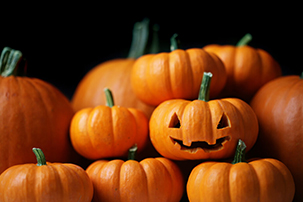In cities across the world, thousands of people host special celebrations to mark the night of December 31. In the United States, New Year’s Eve is such a big deal for many people.
For instance, it is customary for families to gather for dinner on New Year’s Eve in most American homes. Outside, friends may host get-togethers to share the fleeting moments of the evening with a toast. Perhaps the most prominent celebration is the annual spectacular Ball Drop that lures New Yorkers to the City’s Times Square.
The event, which began in 1907, features a large illuminated ball located on the roof of One Times Square. On the night of December 31, millions of New Yorkers flock to Times Square in the cold of the winter evening to watch the ball-lowering ceremony and count down to the New Year. At the stroke of midnight, the ball descends to the bottom of the pole.
Why Do We Celebrate New Year’s Eve?
According to history.com, the earliest New Year celebration was recorded in Mesopotamia around 2000 B.C. Around this time, the ancient Mesopotamian tribes would perform rituals such as celebrating the religious victory of the sky god over the evil sea goddess. Also, around this time, they would elect a new crown for the throne.


Nowadays, we still place a premium on New Year’s Eve. For one, we consider it a special day to bid farewell to the troubles and anxieties of the passing year.
New Year’s Eve reflects our privilege as humans as we remember loved ones that died during the year. We project this desire and reconcile grudges with friends. For most people, it is also time to quit old habits.
Also, New Year’s Eve is a timely moment to celebrate our achievements and project our hopes for the coming year. Still, we cannot ignore the feeling of newness that a new year evokes in us. We see an opportunity to make ambitious resolutions, a tradition that dates well back to the Mesopotamians.
How Much Does The New Year’s Ball in NYC Cost?
It is not clear how much the Times Square Ball cost. The organizers of the Times Square New Year’s Ball have been coy about the price of the ball. They maintain that the materials of the ball and the human resources that assist in its operations are priceless. If they have to put a monetary estimation on the ball, it is worth more than $1 million.
How Much Does The New Year’s Ball in NYC Weigh?
The roof of One Times Square now holds a giant ball that weighs six tons and is 12 feet in diameter. That is a staggering contrast from the first model that dropped over Times Square in 1907. The first ball, made from wood and iron, measured five feet in diameter and originally weighed 700 pounds.
Since then, the ball has undergone several facelifts, culminating in the permanent Centennial ball to ring in 2008. The current New Year’s Eve Ball is a giant, brightly patterned sphere with 11,875 pounds. The ball contains 2,688 Waterford Crystal triangles that vary in size. These are bolted to 672 LED modules and merge with the aluminum frame of the Ball.
Is The New Year’s Eve Ball in NYC New Each Year?
While heralding a new year, the New Year’s Eve Ball is not new every new year. The ball has seen a few upgrades since its maiden descent in 1907. Times Square Ball has received a facelift up to seven times. That has been in response to significant events or the spirits of the times. In the roaring 20s, a wrought-iron incarnation replaced the original model of wood and iron. The weight also fell to 400 pounds.


Similarly, in 1955, a less heavy aluminum model supplanted the wrought-iron ball. It weighed 150 pounds, the lightest weight in its history. Since the turn of the century, Waterford Crystals and Philips Lightning have taken charge of much of the Ball’s design. When the ball-drop tradition marked its 100th anniversary in 2007, a new ball was created to celebrate the event. The result was a striking model with state-of-the-art Philips Luxeon bulbs to dazzle the crowd from afar. Organizers named it the Centennial Ball. In 2014, Waterford began adding 192 new crystal triangles to the Ball annually to depict a theme for each year.
Why Do We Kiss On New Year’s Eve?
Despite its popularity in the United States, there’s no definite explanation for the age-old tradition of kissing a loved one on New Year’s Eve. According to historians, the event is a relic of ancient Rome that stems from the pagan Festival of Saturnalia. Since the ancient Romans were given to debauchery, there was plenty of kissing and smooching. It’s unlikely that Americans derived their tradition of kissing on New Year’s Eve from ancient Romans.


According to Alexis McCrossen, a professor of History, the US derived its tradition from the Germans and English folklore. They believed that the first person you saw on New Year’s Day influenced the New Year’s destiny. Thus, the prevailing superstition is that you’ll have a year of luck in love if you kiss someone you liked on New Year’s Eve. Thus, the New Year’s kiss represents an affectionate bond between two people who hope to remain in touch through the coming year.
Read More: What Time is New Year Around the World?
Why Do We Sing Auld Lang Syne On New Year’s Eve?
Auld Lang Syne, which translates to ‘times long past,’ is steeped in Scottish history. It is appropriate for the New Year as it recalls distant memories and reflects on old times. Hence, we sing Auld Lang Syne at midnight to bid farewell to the past year.
Until 1929, singing Auld Lang Syne on New Year’s Eve was not a tradition in the US. The song, credited to the Scottish poet, Robert Burns, traces even further to an older Scottish folk song. Guy Lombardo, however, started the culture in the US when he first performed the ballad on the eve of 1929. Together with his orchestra, Guy Lombardo continued to play the song each new year’s eve on his popular radio and TV broadcasts until 1977. Slowly, Americans adopted this practice, and singing Auld Lang Syne has remained a New Year’s Eve ritual.
NYE Traditions in Other Countries
Scotland
From the delight of midnight kisses to the resounding chorus of Auld Lang Syne, Scottish customs have influenced many other cultures’ celebration of New Year’s Eve. Known as Hogmanay, New Year’s Eve is marked with many Scottish traditions. One of such customs is First-footing, which is perhaps the most prevalent practice of Hogmanay. It involves crossing the threshold of a friend or neighbor immediately after midnight to be the first person to grace their home in the new year.
Usually, families visit each other with either a black bun or a lump of coal. These symbolize abundance and warmth respectively in the new year.
Spain
As midnight draws near on Nochevieja (Spanish for old night), Spaniards gather together for a delicious family dinner. However, the most anticipated event is the Las doce uvas de la suerte. The tradition, which began in the 20th century, involves eating a dozen grapes to symbolize each clock’s chime. Finishing off the grapes all before the stroke of midnight keeps evil away and rings in prosperity in el ano nuevo (the new year).
Brazil
On the South American coast of Brazil, it is commonplace to find white flowers and candles around the shores of oceans. Locals deposit these flowers as offerings to Yemoja, the sea goddess, to elicit her blessings for the New Year. Another popular superstition is eating lentils, which originates from the Italian immigrants. Brazilians believe that lentils attract money and prosperity due to their coin shapes.
Conclusion
From Sydney to Edinburgh, millions of people await New year’s eve with bated breath. We see this excitement in the various customs often used to celebrate the day. But the most-anticipated new year’s eve tradition remains the Times Square Ball drop. Thousands of New Yorkers shun the cold to wait for hours at the Square. There’s no denying the anticipation that runs high as families huddle in their living rooms to watch the live broadcast of the display. Amid the great fanfare surrounding the New Year’s Eve Ball Drop, one fact rings clear — the symbolic welcome of a new year.






